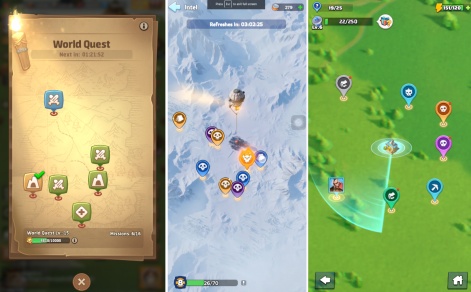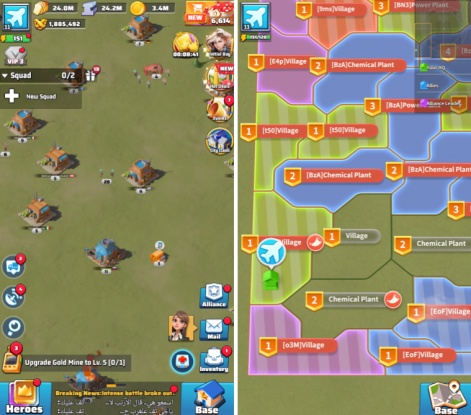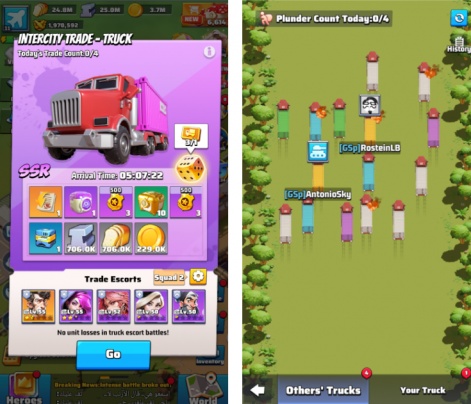One of the biggest challenges in scaling a game is efficient user acquisition. Strategies that once worked wonders may no longer be effective, pushing developers to adapt to the evolving landscape of UA in order to find success.
Case in point, Rivergame’s survival game Last War has been generating over $2 million in revenue per day and attracting around 200k downloads daily. But how did they achieve this feat? In this informative guest post, product and game design consultant Jakub Remiar sheds light on the strategies employed.
Last War by Rivergame represents the latest iteration of a product that has continuously evolved to align with the current user acquisition market trends. This evolution is not by chance but the result of years of iterative development. Rivergame is the studio behind successful titles like Top War (released in April 2019) and Top Heroes, both of which fall under the category of “new generation 4X games” akin to Whiteout Survival.
What ties these games together is their approach to concealing the core 4X gameplay elements during the player onboarding process.
The player’s journey begins with the ad creatives and extends through store screenshots, seamlessly transitioning into actual gameplay in the early and mid-game stages. The game maintains the illusion that it aligns with the creatives’ depiction, featuring hyper-casual gameplay around the gates of mathematics. Last War introduces two dedicated modes for this purpose – one where players engage in single-player missions resembling puzzles on a saga (left image) and the autoplay combat mode (right image) where players must level up heroes with unique abilities. Essentially, the game incorporates a secondary experience derived directly from its viral creatives, offering intuitive player input that feels like a hyper-casual game from the get-go.

The entire onboarding process is scripted with a narrator character who places the player in a scenario where they must address a bomb with an eight-hour countdown integrated into the main base building. The player is tasked with collecting pliers to disarm the bomb, a subtle reference to another viral creative featuring wire cutting. This element was previously utilized in the Top War tutorial, where players had to cut wires in electro boxes to reveal base regions – a strategy seamlessly carried over into Last War. This setup likely stems from numerous AB tests, translating viral UA creatives directly into the game’s functionality.

As the game progresses, it gradually unveils the 4X feature set, requiring players to construct buildings, train soldiers, and gather resources before unlocking the 4X “marching battles” map. This transition is cleverly orchestrated through the “world quest” feature, mirrored in Top Heroes, Whiteout Survival, and Last War. It simplifies 4X map interactions, making it accessible even to non-4X players. In traditional 4X games, players would manually search for monsters, bosses, and resources either near their base or using a search function.

In Last War, players follow semi-randomized icons on their “scanner,” guiding them through diverse encounters on the 4X map. As players complete tasks, their scanner level increases, unlocking rarer encounters with greater rewards. This streamlined approach ensures players always have enough resources to progress while gradually introducing the complexities of the 4X layer.

As the player delves deeper into the game, they encounter typical 4X scenarios akin to popular titles like Rise of Kingdoms, Game of War, and Mobile Strike, necessitating frequent gameplay participation to sustain alliances and defend against rival guilds. Engaging in live events and inter-guild battles for resources and territory becomes the norm, creating a cycle of competition and progression.

Last War introduces innovative features like clan assistance in “world quest” tasks, allowing players to enlist their clan mates’ support for rewards. Additionally, a “Plunder mechanic” ensures heroes from the gates minigame remain relevant in the late game by organizing escort missions for cargo trucks that can be attacked by other players. This cohesive gameplay design connects the early onboarding mechanics with later game features, a strategic approach increasingly adopted in the UA landscape.
This new strategy, successfully implemented in titles like Top War, Kingdom Guard, and Whiteout Survival, has proven immensely profitable. Last War currently generates $2.8 million in revenue per day, showcasing sustained growth. The tight integration of UA creatives with gameplay mechanics and early 4X layer introduction contributes to its success, hinting at a future where UA directly influences product design in other genres.
Edited by Paige Cook


